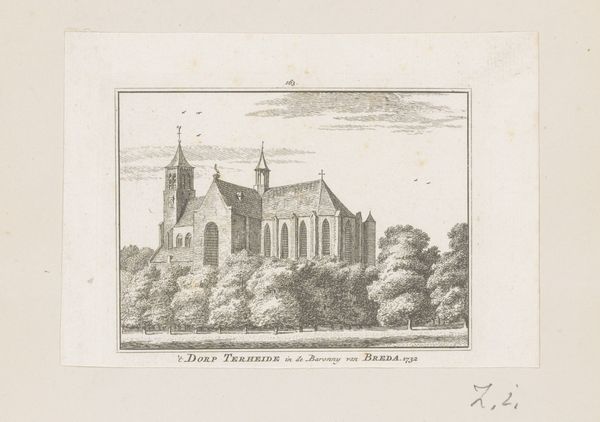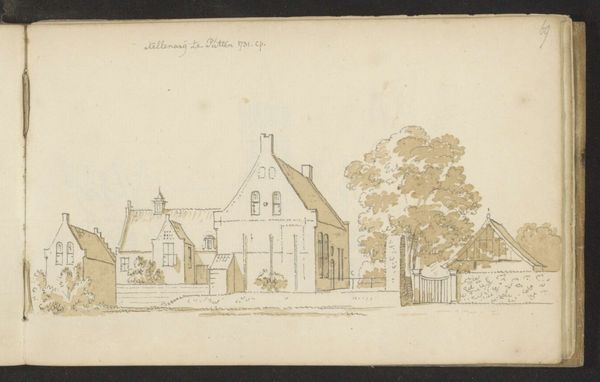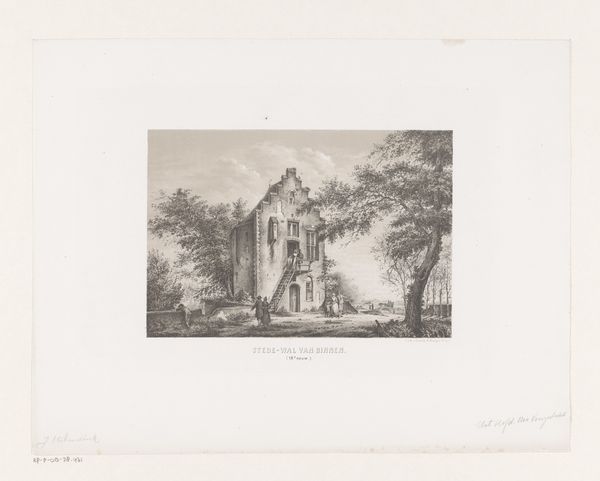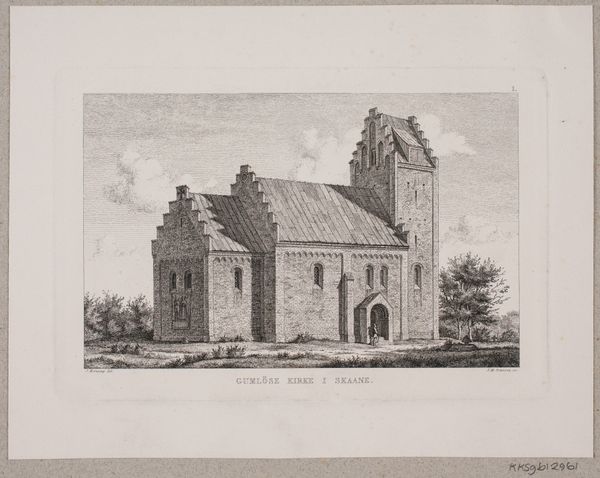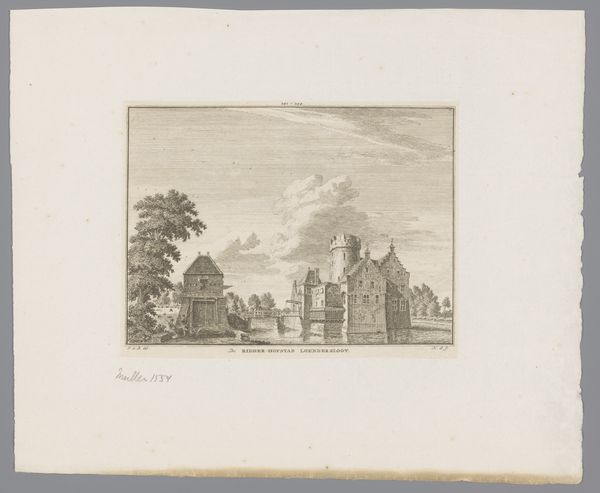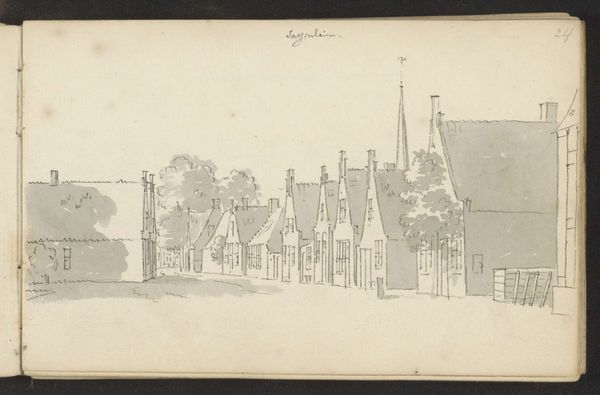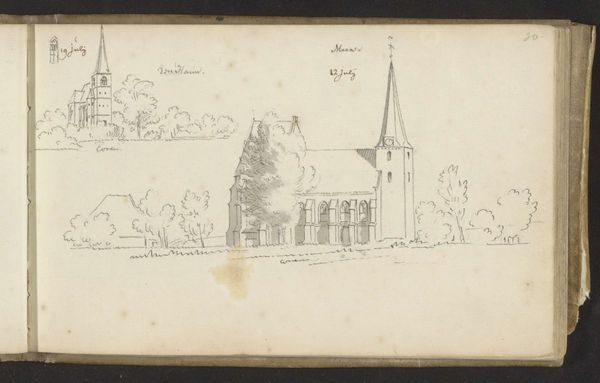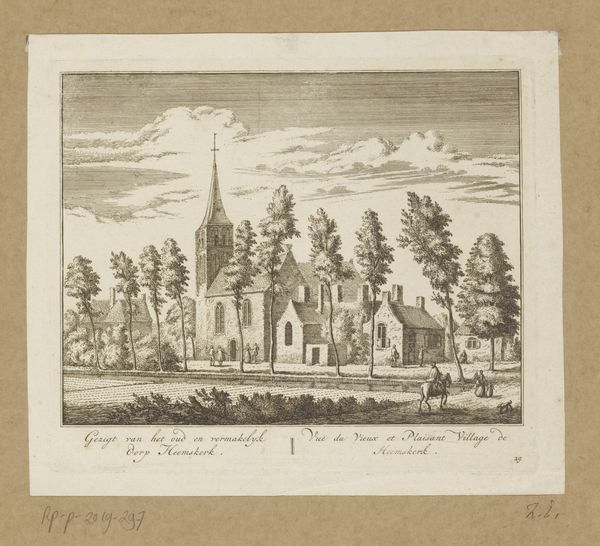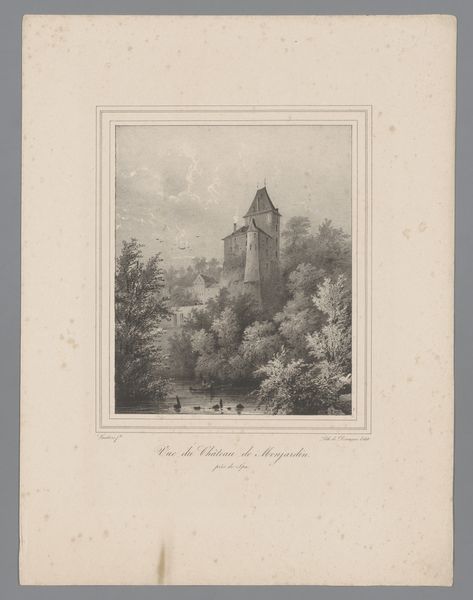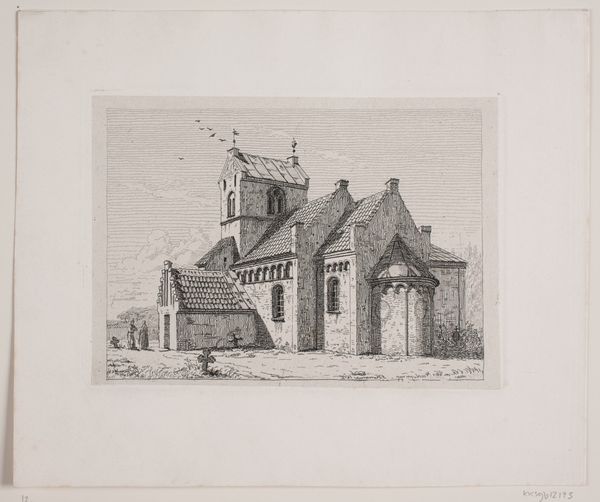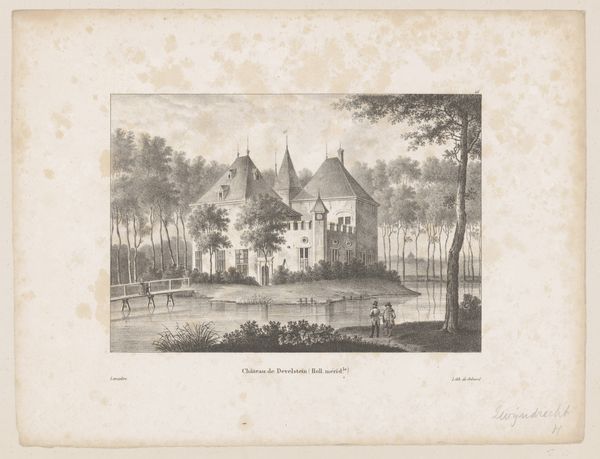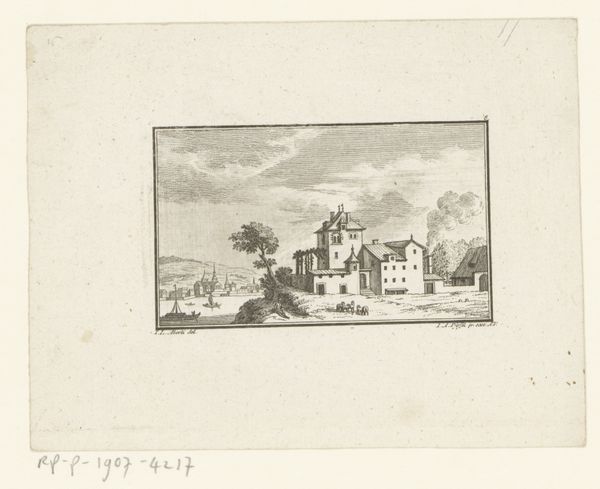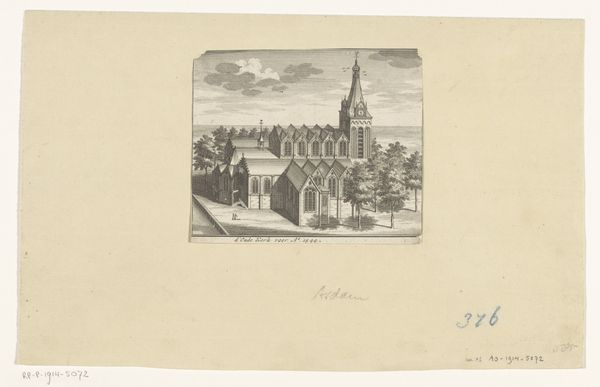
Copyright: Rijks Museum: Open Domain
Editor: Here we have Maria Vos's evocative drawing, "Ruïne van het Klooster Heisterbach in Königswinter," created sometime between 1860 and 1865. It's rendered with delicate pencils, and looking at this ruined architecture against the natural landscape gives me this very poignant feeling of time and decay. What strikes you most when you look at this, especially knowing it's considered part of the Romantic movement? Curator: Oh, that poignant feeling is spot on! For me, it's the sheer *yearning* embedded in the image. Vos isn't just depicting a ruin; she's painting with light and shadow a monument to lost glory, you know? The Romantics were obsessed with the sublime, with these overwhelming encounters with nature and the past, right? Does the crumbling structure spark your curiosity about what it may have looked like at its peak? Editor: Absolutely! I’m picturing what life was like inside those walls. Were there grand ceremonies, quiet contemplation, maybe even some juicy political intrigue? Curator: *Exactly*! And see how Vos contrasts the delicate pencil work of the ruin with the looser, more suggestive rendering of the surrounding nature? The pencil gives form, but what once filled that space is all but absent. You've really grasped its power to speak to memory and imagination. Did the experience alter your view of romanticism? Editor: For sure! It feels much more tangible now. It’s like, less about dramatic landscapes and more about a quiet conversation with history. Thanks for shedding a little more light on this lovely drawing and what it all means. Curator: The pleasure’s all mine! Keep looking closely, asking questions, and trusting your gut reactions. Art history thrives on fresh perspectives.
Comments
No comments
Be the first to comment and join the conversation on the ultimate creative platform.
